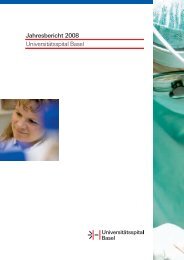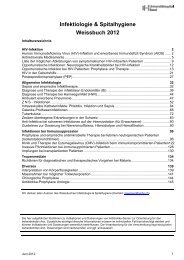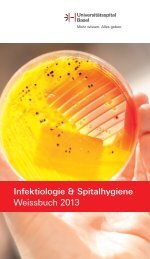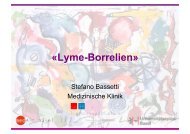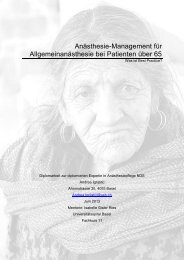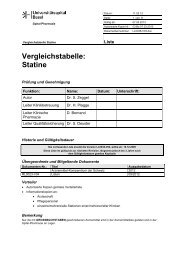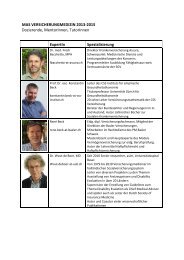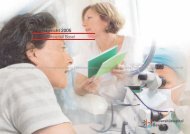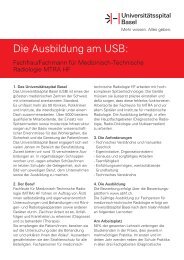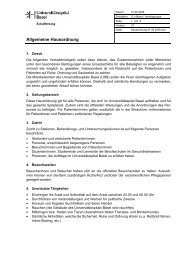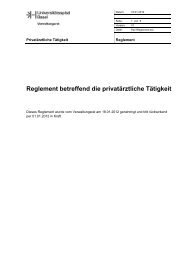Transmucosal Nasal Drug Delivery: Systemic Bioavailability of ...
Transmucosal Nasal Drug Delivery: Systemic Bioavailability of ...
Transmucosal Nasal Drug Delivery: Systemic Bioavailability of ...
Create successful ePaper yourself
Turn your PDF publications into a flip-book with our unique Google optimized e-Paper software.
2. Impact <strong>of</strong> anatomy and physiology on transmucosal nasal drug delivery<br />
gel layer<br />
sol layer<br />
mucus layer<br />
ciliated cell<br />
basement membrane<br />
with neurosecretory cells<br />
Non-ciliated cell<br />
with microvilli<br />
goblet cell<br />
basal cell<br />
Figure 2-2: Respiratory epithelium. The respiratory epithelium is covered by a mucus<br />
layer (gel and sol layer) and the cell types arising from the basement membrane are:<br />
ciliated and non-ciliated cells (with microvilli), goblet cell, and basal cell. Modified after<br />
[Sakane et al., 1991].<br />
2.2.2 Mucus and mucociliary clearance<br />
The goblet cells and the submucosal glands secrete about 20 ml to 40 ml mucus per day [Quraishi<br />
et al., 1998]. The mucus layer protects the underlying tissue from various environmental influences<br />
and the metabolic effects <strong>of</strong> enzymes. The mucus layer and hairs in the anterior nose filter 80% <strong>of</strong><br />
particles larger than 12.5 µm out from the inhaled air stream [Jones 2001]. The pH <strong>of</strong> the mucus<br />
layer varies from 5.5 to 6.5 in adults and from 5.0 to 7.0 in infants [Arora, et al. 2002].<br />
The principal component <strong>of</strong> the mucus is water (90-95%) containing mucin (2%), electrolytes (1%),<br />
proteins (1%, mainly albumin, immunoglobulins, and lysozymes), and lipids [Merkus et al., 1998;<br />
Schipper et al., 1991]. Small molecules not interacting with the components <strong>of</strong> the mucus layer<br />
diffuse freely through the water network <strong>of</strong> the mucous gel. Khanvilkar et al. demonstrated that for<br />
many compounds, nasal mucus layer adds as little additional resistance as an unstirred water layer<br />
<strong>of</strong> equal thickness [Khanvilkar et al., 2001].<br />
The mucus layer consists <strong>of</strong> two films with different rheological properties, a preciliary layer (sol<br />
layer) and a more viscous upper layer (gel layer) covering the tips <strong>of</strong> the cilia. Responsible for the<br />
rheological properties are two forms <strong>of</strong> mucin; soluble mucin and membrane bound mucin. Soluble<br />
mucin forms viscous gels by intermolecular disulfide bridges [Khanvilkar, et al. 2001].<br />
The sol layer with low viscosity is slightly less thick than the length <strong>of</strong> an extended cilium (5 µm to<br />
10 µm). The extended cilia dip into the gel layer and, with effective beats, transports the layer to the<br />
nasopharynx. During the recovery stroke, the cilia move backward through the sol layer. In the<br />
Katja Suter-Zimmermann Page 19 <strong>of</strong> 188 University <strong>of</strong> Basel, 2008




